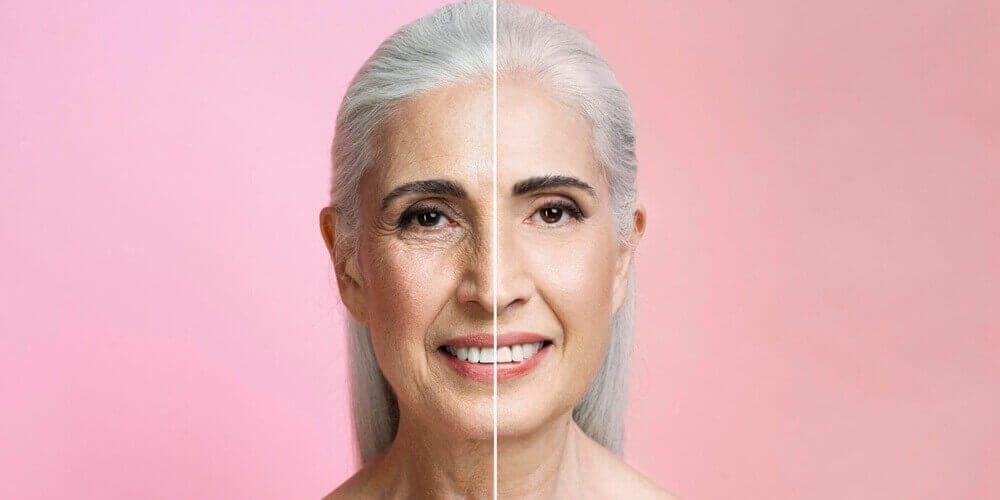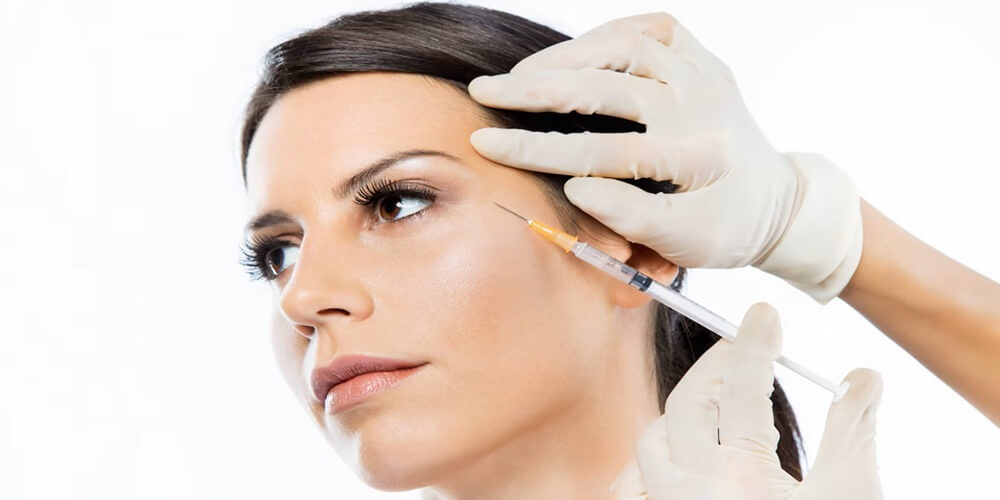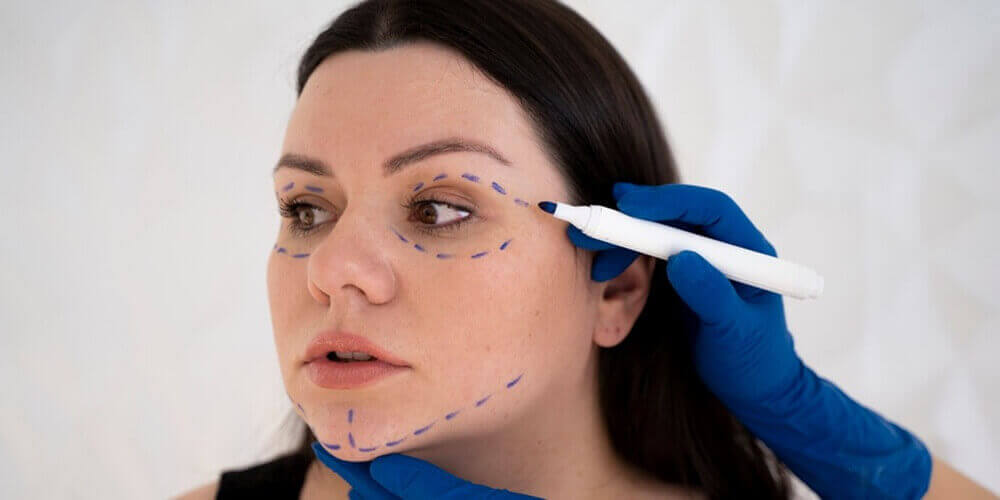Home » How Long Does a French Lift Last? Is it permanent?

In 2012, the French lift was described and named for the first time by two Paris-based plastic surgeons. The French lift is a non-surgical alternative known as a thread lift, and it is currently highly utilized for middle-aged patients who refuse more invasive techniques. The indications for thread lift procedures have evolved in parallel with their techniques in order to meet the current demands of middle-aged patients. Since 2012, many practitioners have gained expertise by placing thread lifts in skin, and the necessity of thread pressure play has been identified. Over the last decade, terms that characterize this procedure in cosmetics have become more common. Even though threading has been increasingly utilized, key information pertaining to facial thread lift longevity remains lacking, such as French lift duration of results and the effective facelift maintenance protocol.
PDO thread lifts are absorbable sutures that have cones inserted at various locations across the face and scalp, and these cones attach to subdermal tissue to lift and tighten the skin in a specific direction. The advanced Gros-sSol technique has been presented as a thread lift procedure that is suitable for all skin types and loved by Asians. The ideal candidates for thread lift procedures are middle-aged women who seek to become more attractive through facial rejuvenation. Furthermore, practitioners may be asked to provide a full face procedure because of their familiarity with tightening codes through suture techniques. The main advantage of the mono or double thread lift procedure is that the risk of nerve blocking is low. Because both mono and double threads are the same width. By pulling the wire in its entirety, the thread-lifted face achieves 85% of its full effects one hour after the end of the procedure. The volume and dose of the suspension threads used in this study were determined after a proper consultation and checking that the patient was not overly thin in the entire face. The results of a thread-lifted procedure are visible for at least five years. The failure of a thread-lifted French lift occurs if the suspension threads are thin, displaced, or cut, not to mention the undesired results of inserting low-quality threads. Therefore, the thread pressure play to control the amount and volume of thread inserted is an important gesture in elegance, skill, safety, and success of a French lift duration.

The French lift duration is first and foremost affected by the characteristics of the patient or patient group treated. Among the characteristics of the patient, skin type, age, and lifestyle choices are very influential factors in determining the units treated and the power design of the procedures. Additionally, the performance of the practitioner plays a crucial role: indeed, on one hand, thread lift techniques are different from each other in terms of expected results – natural, supportive, or regenerative indications – and on the other hand, they are also different in terms of French lift duration.
The characteristics associated with the material clearly influence the choice of the target layer for the lift, as those kinds of threads are stable over time and can be used even more superficially. The absorption time plays a crucial role for the durable, regenerative actions, underlining the possibility of repeating the biostimulating lift for regenerative purposes. Finally, specific anatomical areas present longer-lasting results, probably due to differences in vascular supply and muscular activity. Lifestyle and environmental factors are very different in determining the effect of threads and the duration of this effect. Sun exposure, professional and passive tobacco smoking, and free radicals all represent strong skin aging agents, destabilizing collagen bundles. In the informed consent para-medicine files offered to the patient, it is very important to include this information to avoid conflicts with the patient. End result checks, in both observational and clinical studies, reflect average data. Expert opinions can be shared in the general results, yet there are many differences in their practical conclusions on this subject. However, knowledge of the factors inducing volume loss respects the native anatomy when possible.
In order to help the recovery process and to maintain the results of their French lift duration, patients are always directed to follow a specific set of postoperative care instructions. This regime is designed to help the skin heal more quickly and effectively and, as such, can be critical for maximizing the longevity of the procedure. In addition, patients are often recommended skincare routines to enhance the skin’s strength and elasticity. These usually involve hydrating the skin intensely in order to provide cells with the fluid and nutrients they need to generate healthy skin cells. It is also common for patients to use makeup products containing collagen or elastin to help improve skin elasticity and further firm and tighten the complexions. Many doctors may also recommend aesthetic treatments, such as light-based sessions, to help support the natural production of collagen in the skin. After surgery, it is important for patients to stay in regular contact with their doctor and perform regular check-up visits to ensure the longevity of their procedure. It is also common for patients to revisit their practitioner for the occasional touch-up visit to help maintain their results. While few strong studies exist to support this, it is generally thought important that these testimonials not only work with their doctor but also maintain a healthy lifestyle and a good standard of skincare in order to maintain the results of their French lift. The results of this could help to explain the high levels of customer satisfaction experienced by French lift patients.
How long does a thread lift last. French lifts could last longer than traditional facelifts. Several differences between traditional facelifts and the younger, trendier French lifts could affect facelift maintenance schedules. The French lift duration is a minimally invasive thread lift that pulls facial skin upward, and supported sutures are also threaded through a plastic tube. The procedure is generally less painful and has fewer potential complications than facelifts. The results of French lifts are far less dramatic than those of facelifts. Facelifts can resolve loose jowls and sagging neck skin, while French lifts do not generally rejuvenate the neck area. Patients undergoing facelifts are generally expected to take at least two weeks off from work to recover, while French lift patients can usually return to work within just a few days if they’re determined to do so. The French lift price is thus quite different. The average surgeon’s charge for a facelift was approximately $5,000, while a traditional French lift price is around $1,500. Recent surveys on patients who have undergone the two different procedures found that 96% of French lift patients were satisfied with their results, compared to 75% who underwent the more complicated facelift surgery.
Despite those who underwent the traditional French lift surgery reporting better results, only 72% would undergo a facelift again, compared to the 83% who would repeat their mini-lifts. Still, some surgeons raise doubts about the ability of the French lift to keep its results even. Beyond patients, the research community is also divided over the danger of thread lifts. Some doctors have criticized thread lifts based on the complications of older, non-dissolving techniques. However, a study found that suture lifts with polypropylene sutures can be effective for longer than other thread lifts, although it is not known how a French lift will compare to this study in French lift duration of its results. The new paper suggests that a suture lift with re-absorbable sutures might last as long as six years before patients need a touch-up, and further studies are planned on the results of a French thread lift in eight to twelve months.

From this study, it is difficult to pinpoint the likely French lift duration, but we can suggest that maintaining the results of the procedure relies on replenishment treatments due to the effects of aging as well as thread resorption. It is important, in the context of patient education, to consider these findings and to explain to patients that they will not retain the same results unless they pursue regular facelift maintenance treatments. The improved technology, such as barbed sutures and threads with an introduced cone system, as well as research necessities, have recently brought newer techniques representing a simple alternative to the cosmetic surgical lift. However, it is still difficult to compare these threads in terms of thread lift longevity and silhouette facelift maintenance due to the lack of long-term follow-up studies.
Future directions in thread lift research should investigate the impact of different suture materials and, hence, tissue reactions during healing in terms of the longevity of the procedures. New threads guarantee temporal improvement, are made of lactic and glycolic acid polymers, and have the impact of tightening the tissue while also stimulating new collagen production. This is an interesting future perspective as combining material removal capacity with thread material that simultaneously restores the youthful contours of the face will doubtless be an important benefit for patients. There may also be future room for AI in cosmetic surgery. The application of potential predictive modeling may show data or variables related to an increase in adverse events or poor outcomes, and more importantly, prospective participation in this study may help improve the quality of aesthetic consultations while also guiding skin treatments and research.
Hello!